If for some reason you don’t feel other islands in the Outer Hebrides offer sufficient solitude, then Berneray – little more than two miles from both north to south and east to west – is the place to come, for this is an island of vast shell-sand beaches, hills and a tight-knit if dispersed community.
Most visitors discover Berneray on a day trip but often get hooked on the place and return to base themselves here for longer.
A potted history
As with other islands across the Outer Hebrides, Berneray’s pre-history is assembled from the numerous points of archaeological interest including a standing stone and remnants of cairns. Evidence of a Norse presence is apparent in the name of the island itself, which comes from jarnar-øy and means either ‘Bjorn’s island’ or, perhaps less likely, ‘bear island’.
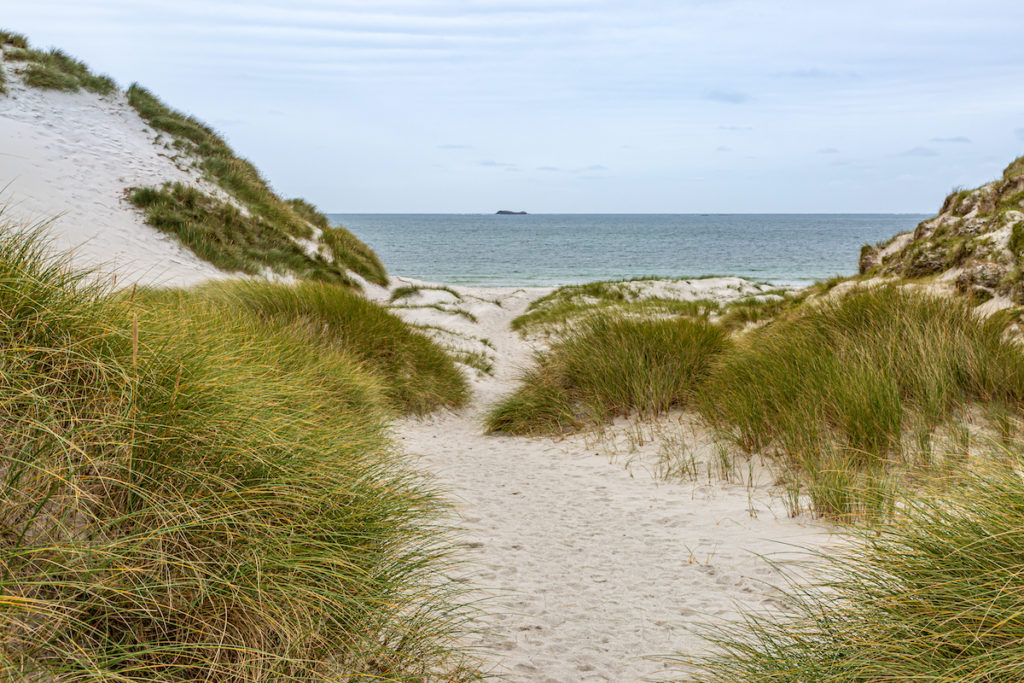
The Isle of Berneray lies at the northern end of the Uists, but its strategic position in the north of the Sound of Harris made it highly attractive to the dominant clans of the region. Historically Berneray was owned by South Harris and for centuries it was known as Beàrnaraigh na Hearadh and owned by the Macleods of Harris. Its fertility – there is little peat to be found on the island – meant that it attracted settled populations, and, during the Macleod era, potatoes were grown here specifically to feed Harris.
In the late 18th and early 19th centuries, Berneray’s population was more than 700, almost five times what it is today. The relatively high numbers were sustained by the kelp trade (kelp was used in the manufacture of soap and glass), but when the industry collapsed the island’s fortunes took a dramatic turn for the worse. A succession of poor harvests and the potato famine of 1846–51 saw emigration on a large scale, mainly to Nova Scotia. The same challenges faced many neighbouring islands, and today Berneray is the only inhabited island in the Sound of Harris.
Getting to Berneray
At its southern end, Berneray is joined to North Uist by a causeway, opened in 1999 by Prince Charles. On a sunlit, still morning, this is an enchanting place. If you have an early crossing, keep an eye out for turnstones pecking along the shoreline or otters slithering over the green kelp. The slipway is 10 miles from Lochmaddy on North Uist, most of it a single-track road with passing places, and a good 25-minute drive.
A small car and passenger ferry, the Port Lochatin, plies the Sound of Harris from Leverburgh on Harris and docks at Ardmaree on the southeast tip of Berneray. There are usually three or four sailings a day; one-way fares are £14.35 (car) and £3.80/£1.90 (passengers).
Berneray’s best bits
West Beach
Berneray’s West Beach is hailed by many as the best across the whole of the islands. That is some claim, given the competition, but you might just agree. The whole of the west coast is effectively one unbroken strip of glistening shell sand. Oddly enough, while the beach is the island’s dominant feature, it can take some getting to: it is located more than a mile away from Berneray’s modest population centre, can be reached by just the one road, and the back of the beach is fenced off to prevent livestock from straying, with only a few intermittent gates to allow access.
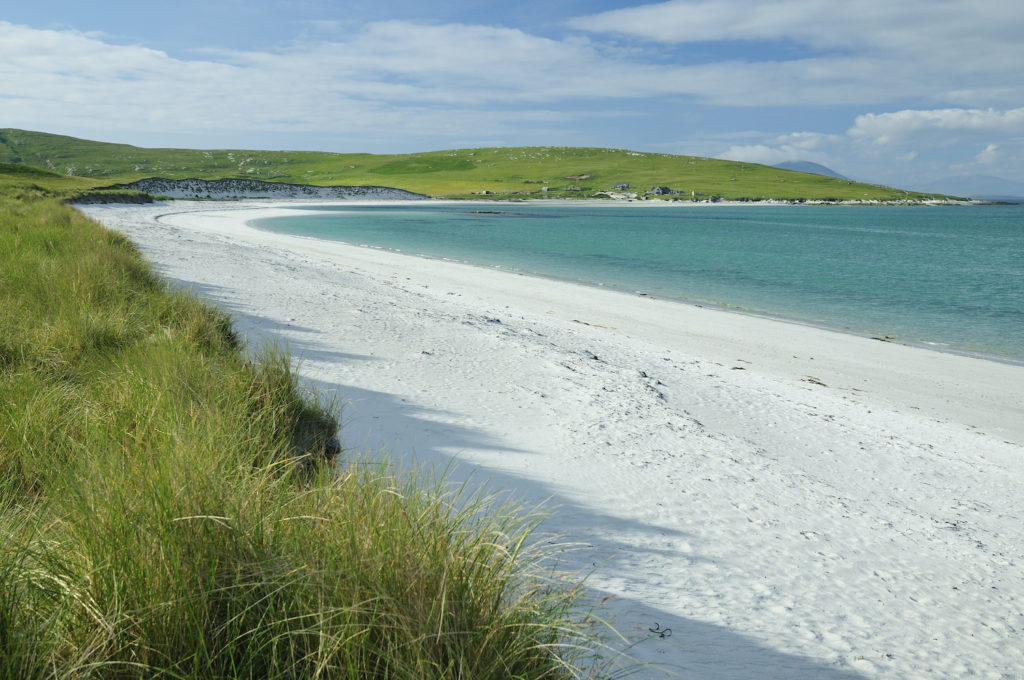
Just back from this shoreline, Berneray’s western flanks are dominated by the machair. As elsewhere, this billiard-table-smooth grassland is transformed in summer into a rainbow of wild flowers. Orchids abound, as do corn marigolds, poppies, buttercups, red clover and field gentians. Butterflies and bees are also drawn to the grass.
Historic buildings
The oldest-surviving building on Berneray is the 16th-century Macleod’s Gunnery, situated close to the island’s hostel on the main road. This was once the home of – and is named after – a 17th- century knight. Close by is a cluster of traditional blackhouses, some of which have now been restored.
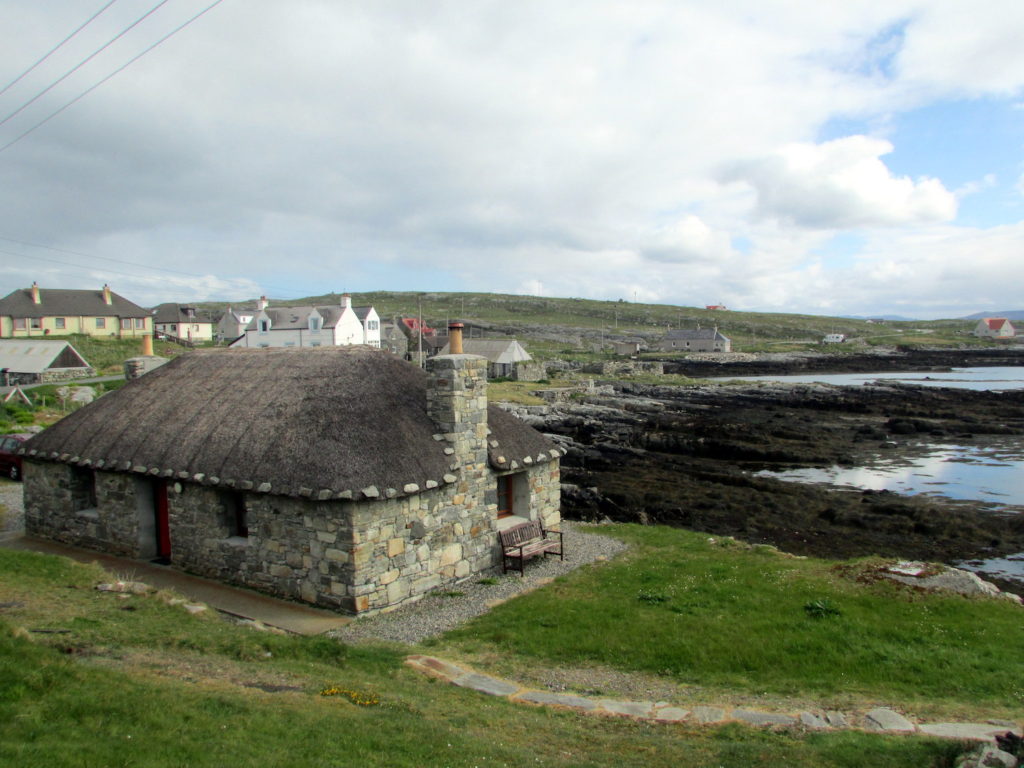
The conspicuous building a few hundred metres north of the island’s hostel and overlooking East Beach is a private home constructed from the ruins of a 19th-century church designed by Thomas Telford. The church provided one entrance for islanders and another for those who rowed over from the neighbouring island of Pabbay. The church fell into disrepair in the 1930s and suffered the indignity of having its roof stripped and shipped off to Scalpay. The process of rebuilding it in 2012–13 was documented by Channel 4 series Restoration Man.
A spot of hillwalking
Berneray also boasts a couple of decent hills to climb. In the southwest of the island, between oval-shaped Loch Bhuirgh and the Borgh road, lies The Hill of the Graveyard (Beinn a’ Chlaidh). A 10-minute walk up this modest rise leads to Clach Mhòr, a standing stone nearly 2½m above ground and the same dimensions below. Also on the flanks of the hill lies Tobar Leathad Ullaraidh (The Well on the Hillside). The water taken from this well was always considered the most pure and fresh on the island and was used for both christenings and distilling whisky.
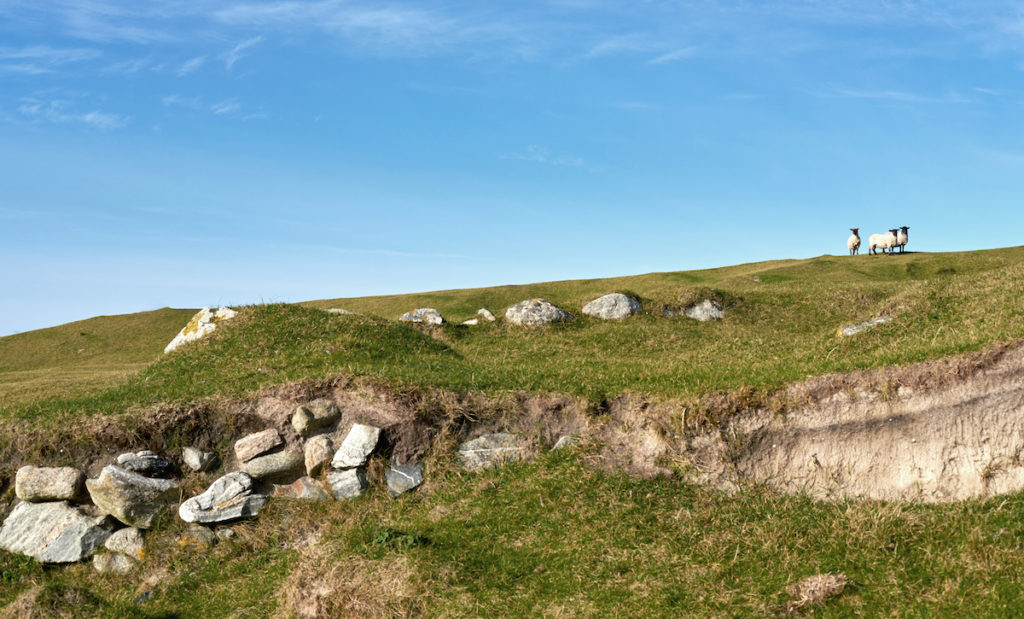
Another attractive and easy place to walk to is the headland at Cràcanais beyond the western edge of West Beach and above Loch Buirgh. There is an old graveyard here and striking views across to North Uist. Finally, open-access laws mean that you can walk around the entire coastline of Berneray (sometimes on grassy tracks, at other times on open ground), a distance of around 14½km (9 miles). This will take 3–4 hours but can make for a wonderful day’s exploration, perhaps picnicking along the way on West Beach.
The Berneray Shop and Bistro
This is the only place for substantial meals on the island, as well as a being a great place to pick up groceries and souvenirs. Recently renovated and run by North Uist couple Abigail and Ruairidh Nicholson, the building has a nautical theme which reflects the leaning towards seafood on the menus. Good food is prepared by a full-time chef including langoustines from Lochmaddy Bay, grilled lobster and spinach crêpes with ratatouille.
Coralbox Gift Shop
Located on the jetty by the harbour, this is a quirky and creative seasonal mobile souvenir store run by locally born Eilidh Carr.
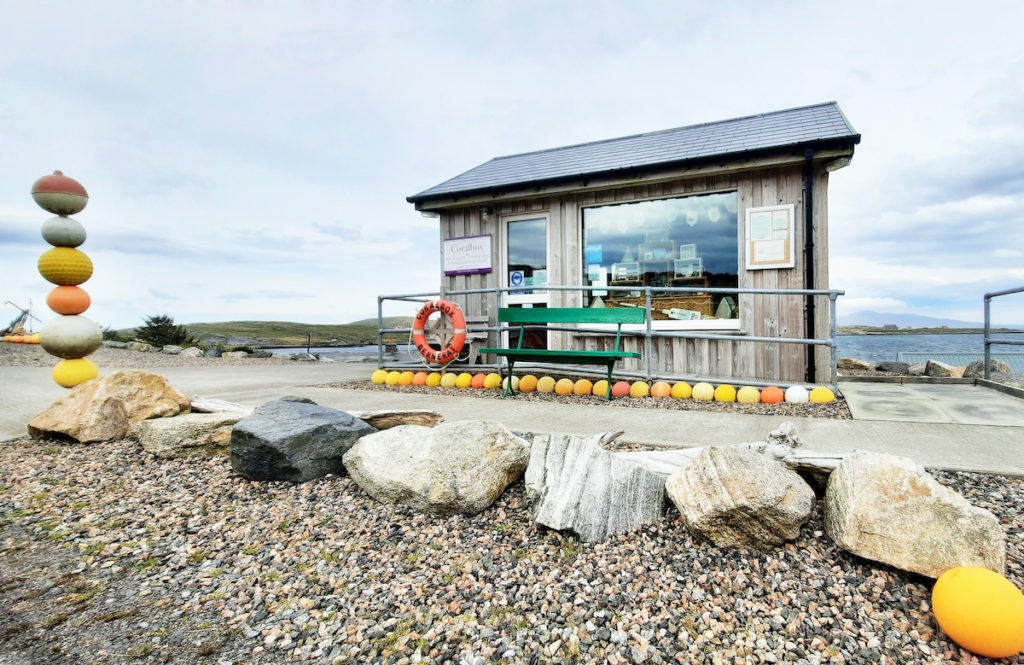
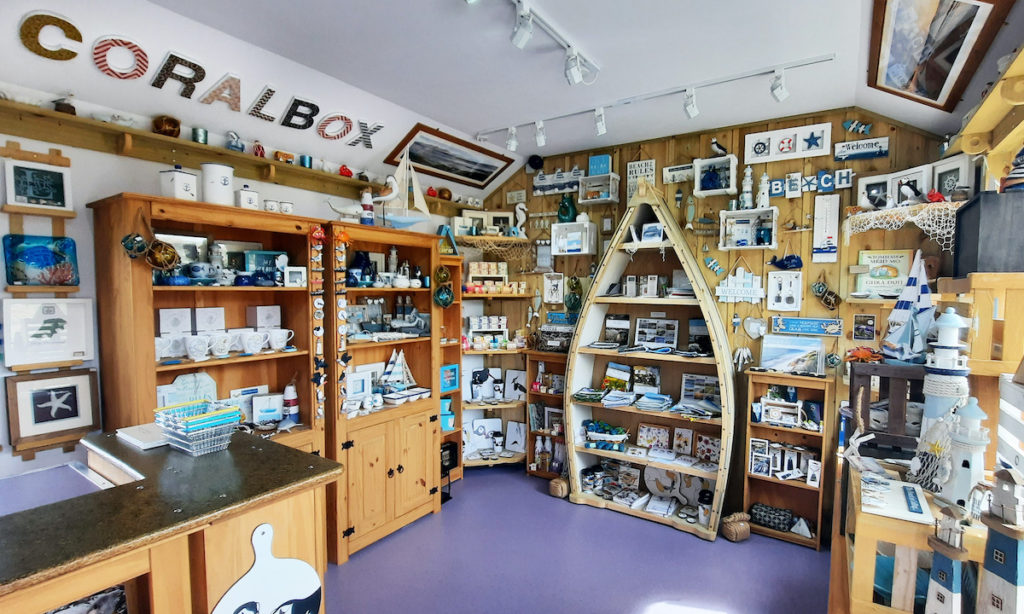
It’s an excellent place to pick up souvenirs, which include Eilidh’s own photographs (she studied photography at Aberdeen University before returning to Berneray) and presents for the folks back home.
Bedding down on Berneray
Berneray’s very few holiday cottages and guesthouses are among the most rural and peacefully positioned of all the islands. A full list of self-catering properties on Berneray can be found here, but I’ve included two of our favourites below. Under Scottish open-access rights, you can camp at most locations on Berneray.
Brightwater Bed & Breakfast
Situated in a gorgeous location on the southern edge of the island, this B&B can be found by the old harbour and island shop. Run by the welcoming Jackie Macleod, it offers traditionally furnished but spotless and cosy rooms (one double and two twins). When the weather’s behaving, Jackie’s patio is a rather life-enhancing place from which to take in the sea views.
More information
Start planning your trip to Berneray with Mark’s comprehensive guide: